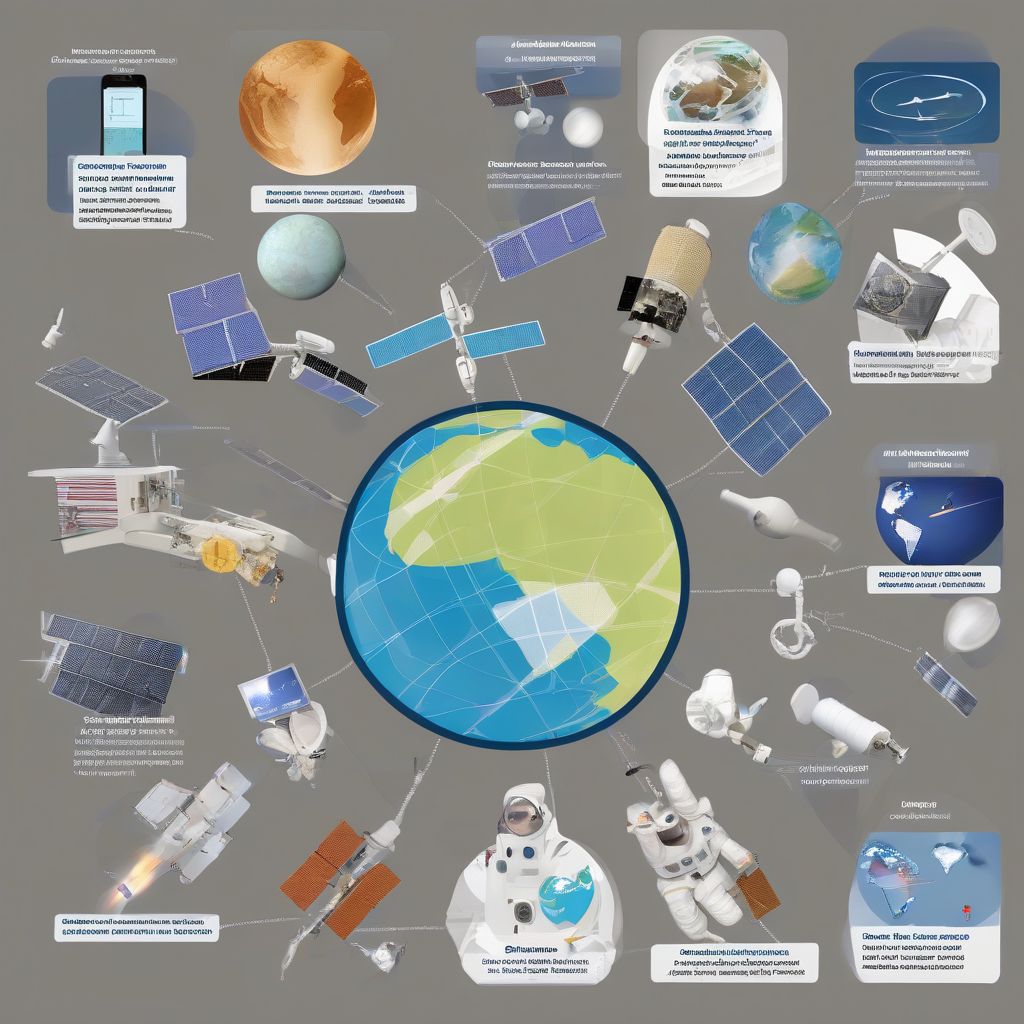From the moment we first gazed at the stars, humanity has dreamt of venturing into the vast expanse of space. But space exploration isn’t just about reaching for the cosmos; it’s also about improving life right here on Earth. While the thrill of discovery drives us outward, the technologies developed for space travel have surprisingly down-to-earth applications that impact our daily lives in countless ways. So, how exactly does space technology benefit life on Earth? Let’s delve into the fascinating ways space exploration enhances our lives.
Everyday Impacts of Space Technology
Space technology has woven itself into the fabric of our daily routines, often without us even realizing it. Here are some prime examples:
Communication Advancements
Satellite technology, a direct product of space exploration, revolutionized communication. GPS navigation, satellite TV, and global telecommunications all rely on these orbiting marvels. Imagine life without instant global communication or the ability to pinpoint your location with ease. Space technology made these conveniences possible.
Medical Marvels
Many medical breakthroughs owe their existence to space research. From CAT scans and MRI technology to implantable heart monitors and artificial limbs, innovations designed for space travel have found their way into hospitals and healthcare facilities, improving diagnosis and treatment options for countless patients. Even LASIK eye surgery benefited from advancements in laser technology initially developed for space-based tracking systems.
Environmental Monitoring
Our understanding of Earth’s climate and environment has been significantly enhanced by satellites orbiting high above. These satellites monitor weather patterns, track deforestation, and assess air and water quality. This data is crucial for scientists and policymakers to make informed decisions about protecting our planet. Imagine trying to predict hurricanes or monitor global warming without the data provided by space-based observation systems.
Technological Spinoffs: From Space to Earth
The pursuit of space exploration necessitates the development of cutting-edge technologies to overcome the challenges of operating in extreme environments. These innovations often find unexpected applications back on Earth, leading to significant advancements in various sectors.
Material Science Innovations
The need for lightweight yet durable materials for spacecraft has led to the development of advanced materials like carbon fiber and titanium alloys. These materials now find applications in everything from aircraft and automobiles to sporting goods and prosthetics.
Water Purification Systems
The need to recycle water in space led to the development of efficient water purification systems. These systems are now used in disaster relief efforts and in regions with limited access to clean drinking water.
Food Safety and Preservation
Techniques developed for preserving food for astronauts during long space missions are now being used to enhance food safety and extend shelf life for consumers here on Earth.
Inspiring Innovation and Education
Beyond tangible technologies, space exploration fuels scientific curiosity and inspires future generations of scientists, engineers, and innovators. The pursuit of knowledge about the universe fosters critical thinking and problem-solving skills essential for tackling complex challenges facing humanity.
STEM Education
Space exploration serves as a powerful tool for engaging students in STEM (Science, Technology, Engineering, and Mathematics) fields. The excitement of space travel can spark a lifelong passion for learning and discovery.
Global Collaboration
Space exploration often requires international cooperation, fostering collaboration and shared knowledge among nations. The International Space Station stands as a testament to the power of global partnerships in achieving ambitious scientific goals.
 Benefits of Space Technology for Life on Earth
Benefits of Space Technology for Life on Earth
Conclusion: A Universe of Benefits
From the everyday conveniences we take for granted to groundbreaking advancements in medicine and environmental monitoring, space technology has profoundly impacted life on Earth. The pursuit of knowledge beyond our planet has led to unexpected innovations that improve our lives in countless ways. As we continue to explore the cosmos, we can anticipate even more transformative discoveries and technological spinoffs that will benefit future generations. What are your thoughts on the impact of space technology? Share your comments below and let’s discuss the exciting possibilities that lie ahead!



